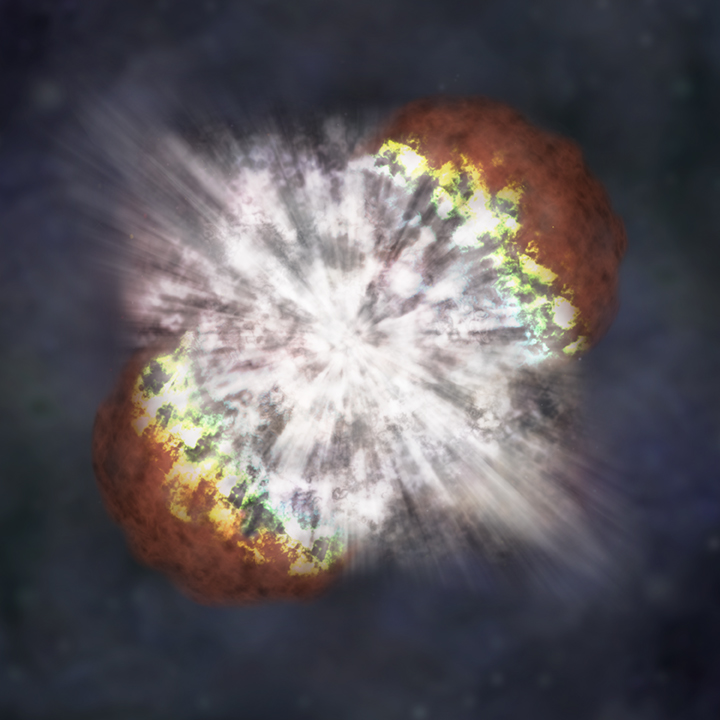Supernovas represent the most grandiose explosions observed by humanity, manifesting as incredibly luminous, immensely powerful detonations of stars. These cosmic phenomena not only captivate the imagination but also play a crucial role in the astrophysical understanding of the universe.
The genesis of a supernova can stem from two primary scenarios. Initially, one such event occurs as a massive star, possessing at least five times the Sun's mass, exhausts its nuclear fuel. This exhaustion leads to a dramatic reduction in the core's temperature and, consequently, its pressure. Given the delicate balance between gravitational forces pulling inward and nuclear forces pushing outward, this reduction in pressure causes the star to lose its battle against gravity, resulting in its rapid collapse. This collapse triggers colossal shock waves, forcefully ejecting the star's outer layers in a spectacular explosion. What remains is either a densely packed core or, in cases of stars with more than ten solar masses, potentially a black hole.
A second pathway to a supernova involves a binary star system, where at least one constituent is a white dwarf. These remnants of stars like our Sun become volatile under certain conditions, such as collision or accumulation of excessive matter from its companion, culminating in an explosive supernova.
The brilliance of supernovas is unparalleled, with their glow momentarily outshining entire galaxies. This luminosity enables them to be visible across vast cosmic distances, serving as beacons in the dark expanses of space.
Despite their spectacular nature, supernovas are relatively rare occurrences within any given galaxy, including the Milky Way, with estimates suggesting a rate of two to three events per century. However, the vast number of galaxies across the universe allows astronomers to witness several hundred supernovas each year beyond our galactic neighborhood. Many events within the Milky Way remain obscured by cosmic dust, eluding direct observation.
The study of supernovas yields significant insights into the cosmic fabric. Utilizing certain types of supernovas as cosmic distance markers, scientists can map the universe's expanse more accurately. Supernovas also elucidate the process of chemical element formation, showcasing stars as the universe's elemental forges. The heavier elements essential for life, such as carbon, nitrogen, and even precious metals like gold and silver, are synthesized in the hearts of stars and dispersed across space in these monumental explosions.
To unravel these cosmic mysteries, NASA utilizes an array of sophisticated telescopes, including the Nuclear Spectroscopic Telescope Array (NuSTAR). Employing X-ray technology, NuSTAR provides a unique window into the processes leading up to and following supernovas, enriching our understanding of these extraordinary events and their contributions to the elemental diversity of the universe.
In essence, supernovas are not merely awe-inspiring celestial occurrences but are fundamental to the cycle of matter in the cosmos. Through their explosive death throes, massive stars seed the universe with the elements necessary for new stars, planets, and potentially life itself. The continued study of these phenomena not only satisfies human curiosity about the cosmos but also advances our comprehension of the fundamental processes that govern the physical universe.
Tags:
Cosmology

